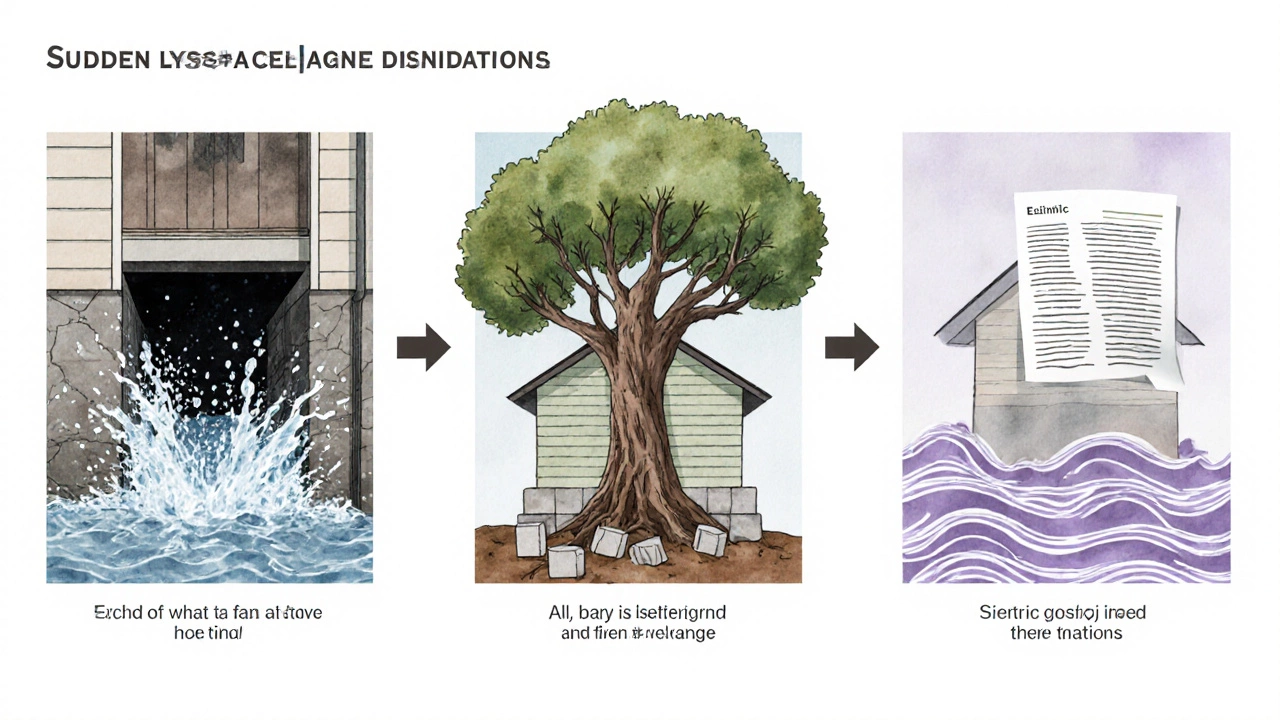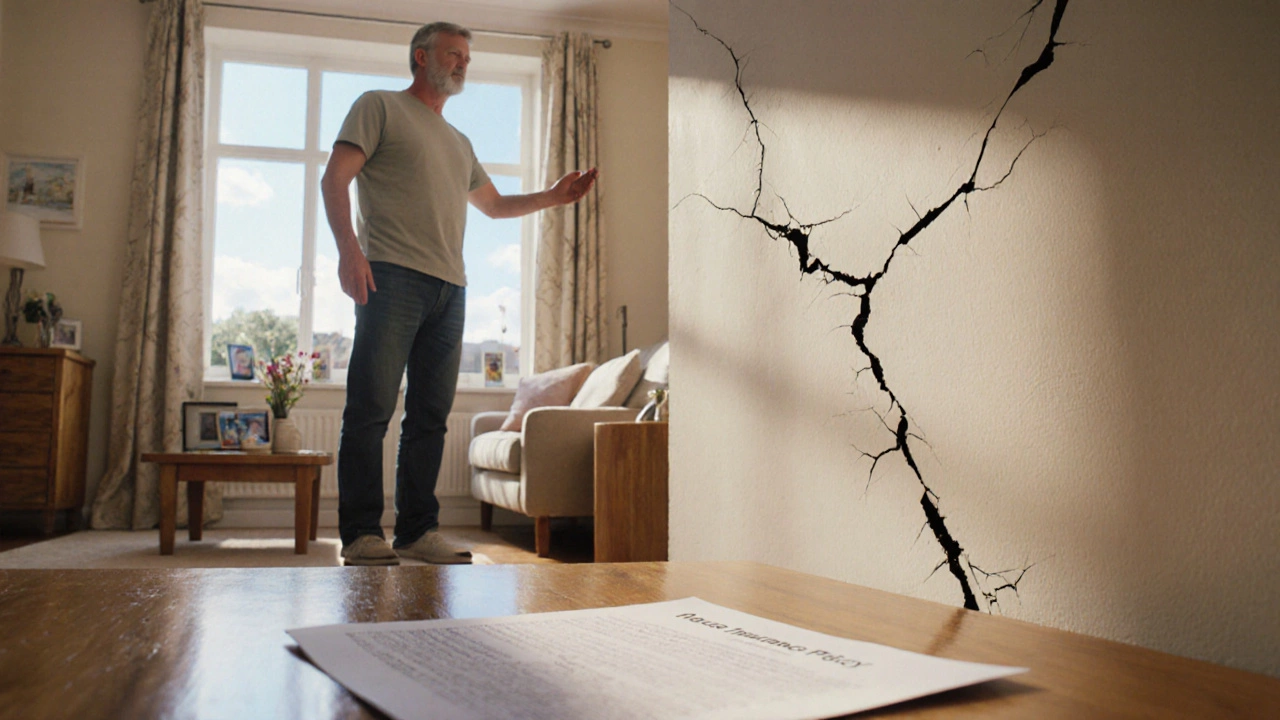Foundation Coverage Checker
Is Your Foundation Damage Covered?
What caused the foundation damage?
When cracks spider across your living room wall or the floor starts to feel uneven, the first thought is usually “I need a foundation repair.” But before you call a contractor, you probably wonder: does my house insurance actually pay for that? The answer isn’t a simple yes or no - it depends on what caused the damage, what your policy says, and how you document the problem.
What "House Insurance" Actually Covers
House insurance is a type of property insurance that protects homeowners against losses to the structure and personal belongings caused by covered perils such as fire, theft, or storm damage. It is also known as a homeowner’s policy. Most policies split coverage into two main parts: dwelling coverage (the physical structure) and personal property coverage (your stuff). The dwelling portion is where any foundation claim would land.
Defining "Foundation Issues"
Foundation issues refer to any condition that compromises the structural integrity of a home’s base, including cracks, settlement, bowing walls, and water intrusion. These problems can stem from a variety of sources: shifting soil, poor drainage, underground utilities, or even construction defects.
Why Most Standard Policies Exclude Foundation Repairs
Insurance is built around the idea of sudden, accidental loss. Most standard house insurance policies exclude damage that results from “gradual wear and tear” or “earth movement.” In insurance jargon, this is an exclusion that specifically carves out "soil settlement" and "ground movement" from coverage.
- Settling caused by natural compaction over years is considered a maintenance issue.
- Cracks that develop slowly due to poor construction are viewed as the homeowner’s responsibility.
- Water damage from leaking pipes is usually covered, but water that seeps in because of bad grading or drainage is often excluded.
These exclusions protect insurers from paying out on problems that can be prevented through proper building practices.

When Foundation Damage Might Be Covered
Not all foundation problems fall under the exclusion box. Insurance will step in if the damage is the direct result of a covered peril.
- Sudden water intrusion: A burst water main that floods the crawl space can cause immediate foundation settlement. Because the water burst is an accidental event, the resulting damage is usually covered.
- Impact damage: A tree falling on the house or a vehicle hitting the foundation can crack footings. The impact is a covered peril, so repair costs are claimable.
- Earthquake (if endorsed): In regions where earthquakes are common, an optional earthquake endorsement can cover foundation shifts caused by seismic activity.
In each case, the key is that the damage must be sudden and directly tied to an insured event.
Boosting Your Coverage: Endorsements and Additional Policies
If you live in an area prone to soil movement, heavy rains, or minor earthquakes, consider adding a targeted endorsement. Below is a quick comparison of a standard dwelling policy versus one with a foundation endorsement.
| Feature | Standard Policy | With Foundation Endorsement |
|---|---|---|
| Coverage for settlement due to soil movement | Excluded | Covered up to policy limit |
| Water intrusion from burst pipe | Covered | Covered |
| Damage from fallen tree | Covered | Covered |
| Deductible | Standard deductible (e.g., $1,000) | May increase by $250‑$500 |
| Annual premium impact | Base rate | +5‑15% depending on risk |
Talk to your insurer about “foundation endorsement” or “structural defect coverage” to fill the gaps.
How to File a Claim for Foundation Damage
Claim process is the series of steps a policyholder follows to request payment for a covered loss. A well‑documented claim can mean the difference between a full payout and a denial.
- Secure the property: Prevent further damage by addressing drainage, covering exposed soil, or shoring up walls.
- Gather evidence: Take clear photos of cracks, water stains, and any visible damage. Keep receipts for emergency repairs.
- Notify your insurer promptly: Most policies require notification within 30 days of discovering the damage.
- Hire a qualified inspector: A licensed structural engineer can produce a written report linking the damage to the insured peril.
- Submit documentation: Provide the engineer’s report, photos, and any repair estimates to the claims adjuster.
- Negotiate the settlement: Review the adjuster’s estimate, compare it with contractor quotes, and request adjustments if needed.
Keep a written record of every phone call and email - insurers love paperwork, and it protects you.

Tips to Avoid Disputes and Denials
- Read your policy carefully: Look for wording like “sudden and accidental” and “excludes gradual settlement.”
- Maintain your home: Regularly inspect drainage, gutters, and the grading around your foundation. Showing that you’ve kept up with maintenance helps prove the damage wasn’t neglect.
- Get a professional opinion early: An engineer’s report dated before you file can be a powerful piece of evidence.
- Document weather events: If heavy rain or a storm preceded the damage, note the date, intensity, and any local news reports.
- Know the difference between covered and non‑covered perils: A burst pipe is covered; a slow‑leaking foundation crack is not.
Quick Checklist Before You Call a Contractor
- Review your policy’s dwelling coverage limits and exclusions.
- Identify the trigger - was it a sudden event?
- Take detailed photos and note dates.
- Contact your insurer to confirm coverage.
- Hire a licensed structural engineer for an official assessment.
- Obtain at least three repair quotes.
- File the claim with all supporting documents.
Frequently Asked Questions
Does standard homeowners insurance ever cover foundation repairs?
Only if the damage is caused by a covered peril such as a burst pipe, fire, or impact. Gradual settlement or soil movement is usually excluded.
What is a foundation endorsement?
It’s an optional policy add‑on that expands coverage to include damage from earth movement, soil settlement, or other foundation‑related risks that a standard policy excludes.
How can I prove that my foundation damage was sudden?
Gather evidence like photos taken immediately after a storm, a dated engineer’s report linking the damage to a specific event, and any emergency repair receipts.
Will filing a claim raise my insurance premiums?
Most insurers treat a foundation claim like any other dwelling loss, which may cause a modest premium increase. Adding an endorsement beforehand can sometimes mitigate the impact.
What should I do if my claim is denied?
Review the denial letter, request the adjuster’s written rationale, and consider an independent appraisal. If needed, you can appeal or involve a public adjuster or attorney.

Author
Damon Blackwood
I'm a seasoned consultant in the services industry, focusing primarily on project management and operational efficiency. I have a passion for writing about construction trends, exploring innovative techniques, and the impact of technology on traditional building practices. My work involves collaborating with construction firms to optimize their operations, ensuring they meet the industry's evolving demands. Through my writing, I aim to educate and inspire professionals in the construction field, sharing valuable insights and practical advice to enhance their projects.